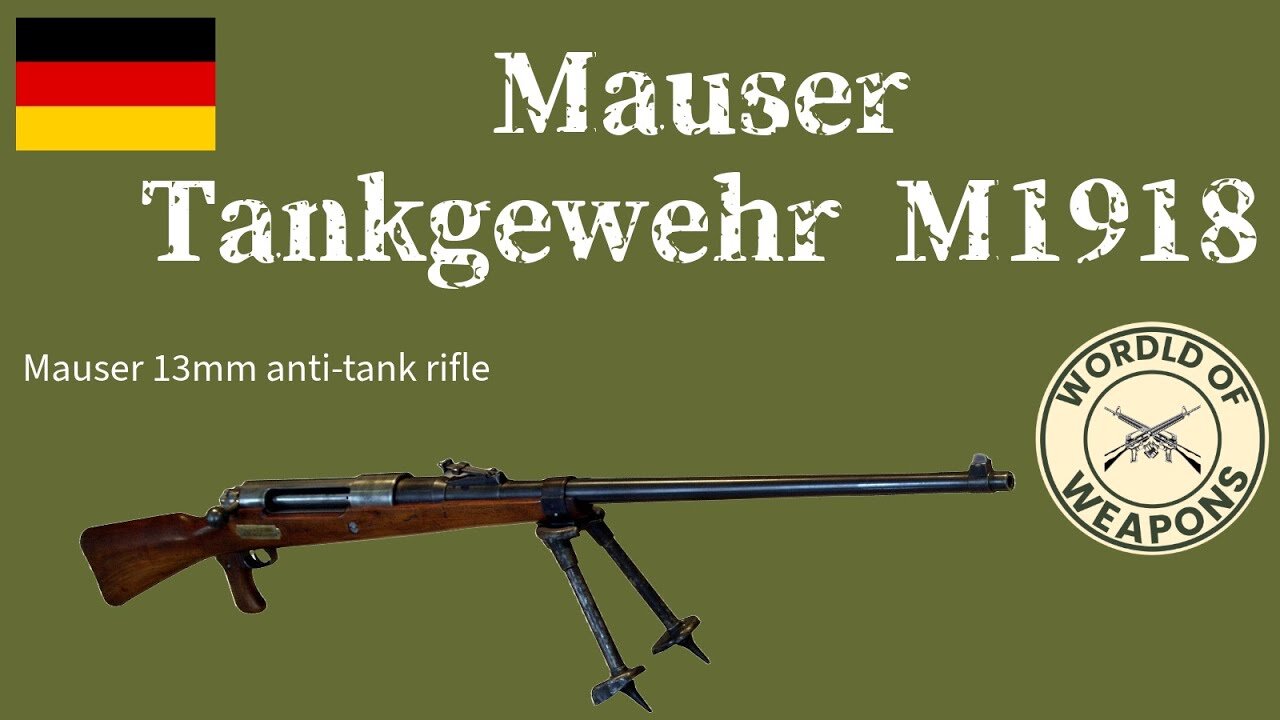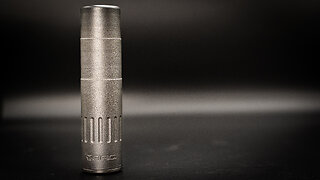Premium Only Content

Mauser Tankgewehr M1918 🇩🇪 The Titan of World War I
Mauser 13mm Anti-tank rifle M1918
Mauser T-Gewehr (Tank abwehr Gewehr M1918 = anti-tank rifle, model 1918) weapon is the first of its kind ever to be adopted and see the combat. It was designed in Germany during the closing stages of World War 1, to provide German infantry with inexpensive and man-portable weapon, capable to defeat the armor of the newest British invention, the battle tank. It was adopted in 1918 and manufactured by Mauser Werke arms factory until the Armistice, with total production estimated at about 15 thousand rifles. The Mauser T-gewehr anti-tank rifle proved to be effective enough against earliest British tanks, as their armor was designed to withstand only rifle-caliber ammunition and shrapnel, and the T-Gewehr fired purpose-designed large caliber cartridge loaded with steel-core AP bullet (52 g at 770 m/s). The major drawbacks of the T-gewehr were heavy recoil, heavy weight and huge size – features, later inherited by most weapons of similar class and purpose. It is rumored that normally T-gewehr crew members fired only about 2 or 3 rounds before passing the gun to the team-mate, as they suffered heavily from excessive recoil – the rifle had no recoil mitigation means, such as buffered buttstocks, soft buttpads and muzzle brakes, which became the must for latter weapons of the same class.
Mauser T-gewehr anti-tank rifle is a manually operated, single shot bolt action rifle. It uses more or less traditional Mauser-type rotary bolt with frontal locking lugs. Cartridges are loaded manually directly into the chamber. Rifle is fitted into the wooden stock with pistol grip, and an MG-08/15-type bipod is fitted to the front of the stock. The iron sights consisted of the blade front and tangent-type rear, with settings from 100 to 500 meters.
The armor-piercing hardened steel cored 13.2×92mm (.525-inch) semi-rimmed cartridge, often simply called "13 mm", was originally planned for a new, heavy Maxim MG.18 water-cooled machine gun, the Tank und Flieger (TuF) meaning for use against "tank and aircraft", which was under development and to be fielded in 1919. The rounds weighed 51.5 g (795 gn) with an initial velocity of 785 m/s (2,580 ft/s)
-
 1:08:16
1:08:16
Tactical Advisor
23 hours agoNEW Budget Glocks | Vault Room Live Stream 011
135K10 -
 16:30
16:30
SNEAKO
1 day agoNO FRIENDS IN THE INDUSTRY.
173K72 -
 6:19
6:19
BlackDiamondGunsandGear
1 day agoHow Fat Guys can Appendix Carry
121K16 -
 6:58
6:58
Gun Owners Of America
1 day ago2024 Was Huge For Gun Rights, Here's Our Top 10 Wins!
59K9 -
 15:50
15:50
Degenerate Jay
2 days ago $3.58 earnedJames Bond Is Being Ruined By Amazon? Make Him A Black Gay Woman?
73.2K15 -
 15:18
15:18
DeVory Darkins
1 day ago $29.73 earnedTrump Drops NIGHTMARE Warning on Joe Biden
87.7K102 -
 36:13
36:13
The Why Files
1 month agoAlien Implants Vol. 1: Devil’s Den UFO Encounter: What Was Found Inside Terry Lovelace?
101K46 -
 9:03
9:03
Alabama Arsenal
2 days ago $1.43 earnedAAC HUB 2K | Modern Features, Iconic Classic Looks
20.3K2 -
 13:49
13:49
Dermatologist Dr. Dustin Portela
2 days ago $2.73 earnedDermatologist Reveals the Worst Things To Do To Your Skin
23.2K15 -
 1:02:24
1:02:24
PMG
1 day ago $1.00 earned"Hannah Faulkner and Jamie Villamor | DEFEND, INSPIRE, INFLUENCE"
17.6K